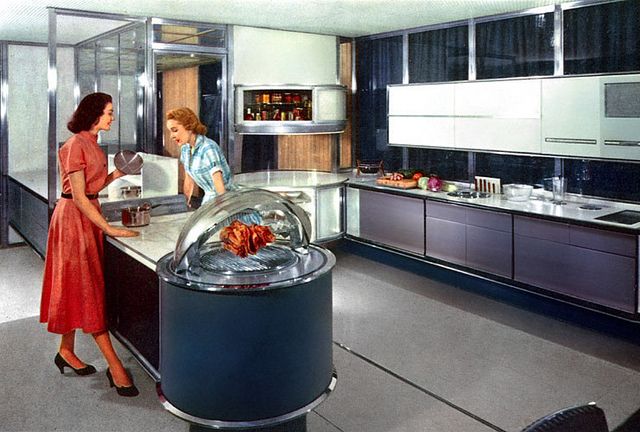Some rights reserved by joebehr
Imagine if your fridge ‘magically’ restocked itself with milk. Imagine if your cupboard was ‘magically’ piled high with biscuits so your tea never had to live without its faithful friend when you forgot to buy custard creams. Imagine if your dentist appointments were booked for you, without your consent, by a toothbrush that screened your dental health. Well, that last one would be much less pleasant. Imagine a world where you didn’t have to think, where every process was decided for you through the connectivity of objects. Are you imagining that this world exists? Well it already does, and the process is evolving every day. This is ‘the Internet of Things’.
What is the Internet of Things, you ask? The Internet of Things (IoT) is a term used to describe internet-enabled devices that ‘talk’ to one another, essentially simplifying your decisions and automating your life. A frequent example used to illustrate this concept is the milk carton dilemma (my choice of using the word ‘dilemma’ will soon become more apparent). You’re out of milk after a week of knocking back coffee like it’s water, and your fridge notices this (don’t ask me how, I’m not a technology whizz). Somehow, through sensors in the fridge, it detects the absence of milk and orders you a replacement online.
But what if I had decided to go dairy-free for the week, or to replace my breakfast cereal with toast? Can the internet of things satisfy whims?
emarketer points to a Gartner report, which predicts that by 2020 there will be 26 million devices connected to the internet (I hope my aforementioned idea regarding the teeth-screening toothbrush isn’t one of them!). It appears that the concept of minimizing human intervention isn’t the stuff of sci-fi movies, it’s actually becoming a reality. So what are the benefits and potential pitfalls of this technology?
The Internet of Things in a sense already operates in businesses. Let’s look at the world of print and take the example of direct mail. How does a company obtain personal information to target individuals when the customer has had no encounter with them previously? Social media and e-commerce mean that data about your previous purchase choices and your characteristics can all be sold to companies, notifying them of your potential custom. The database acts like Santa’s little elves and distributes collateral to target you, be it in the form of a relevant (and maybe even personalised) catalogue through your door. In this way, we can see how an integrated approach between digital (the internet) and print (the thing) has saved the company time, effort, and has perhaps resulted in a new customer.
And on a more personal level? British Gas, for example, are already utilising this concept with their Hive Reactive Heating, which allows the user to remotely turn on their heating from any location, resulting in a happy warm home for the cold commuter eagerly anticipating a toasty living room on their return. The list of possibilities is endless, which is a little daunting. Where will the line between digital and the ‘real world’ end?
There are already concerns that the IoT could result in privacy and security issues. Whilst the Guardian may quote the slogan ‘privacy is dead – get over it’, it does ironically predict that the blurring between digital and reality could initiate a bigger awareness of technology so we are able to take precautions.
Despite all this, emarketer says in a separate report that 44% of businesses haven’t even heard of the Internet of Things! However, the IT/high-tech sector is the business most familiar with the concept and willing to optimise it. This will naturally result in a following from other businesses, as tech is such an integral part of the working environment, suggesting even more so that the IoT will come.
Overall, I can definitely see the benefits of technology and appreciate the impact it can have on our lives, but I don’t think I’d appreciate my toothbrush telling me when to visit the dentist.
